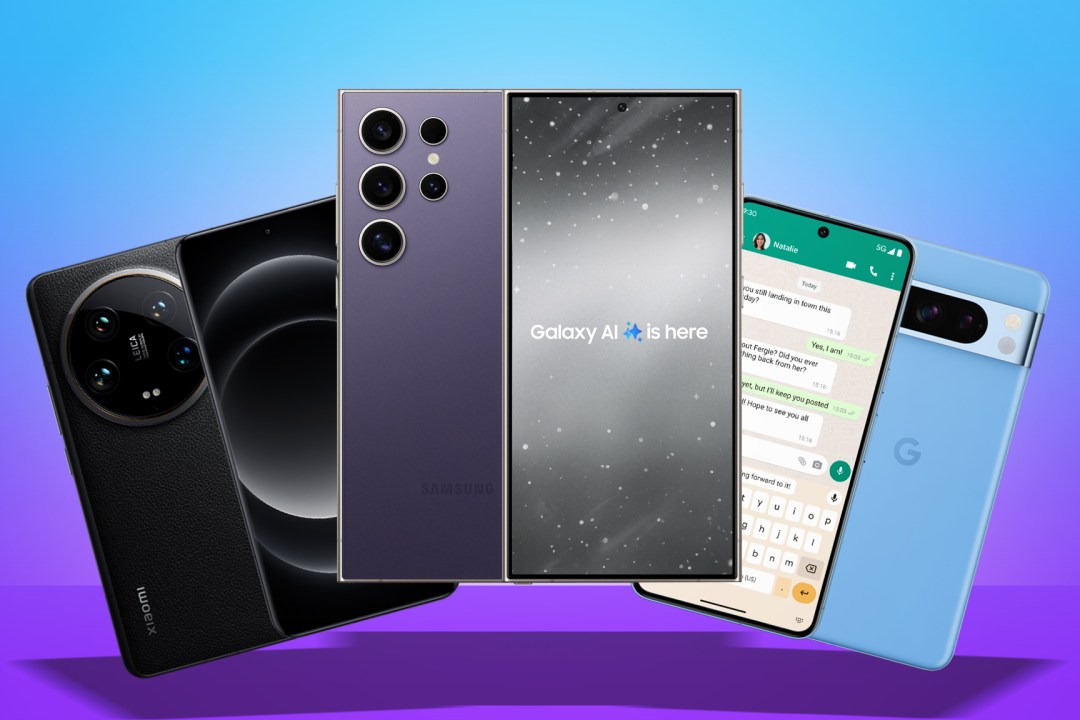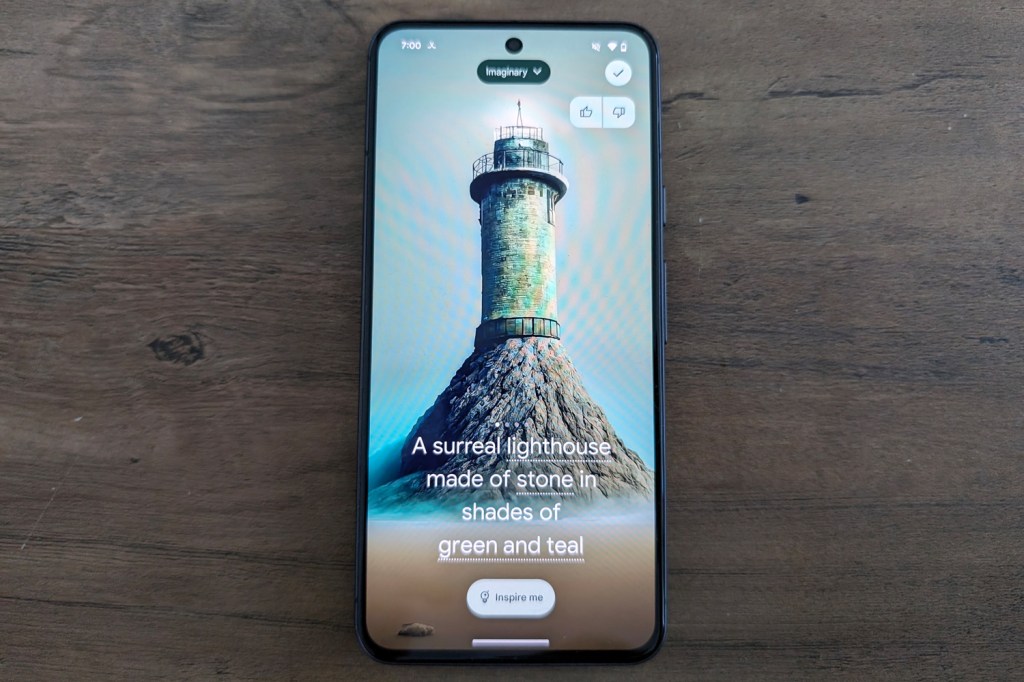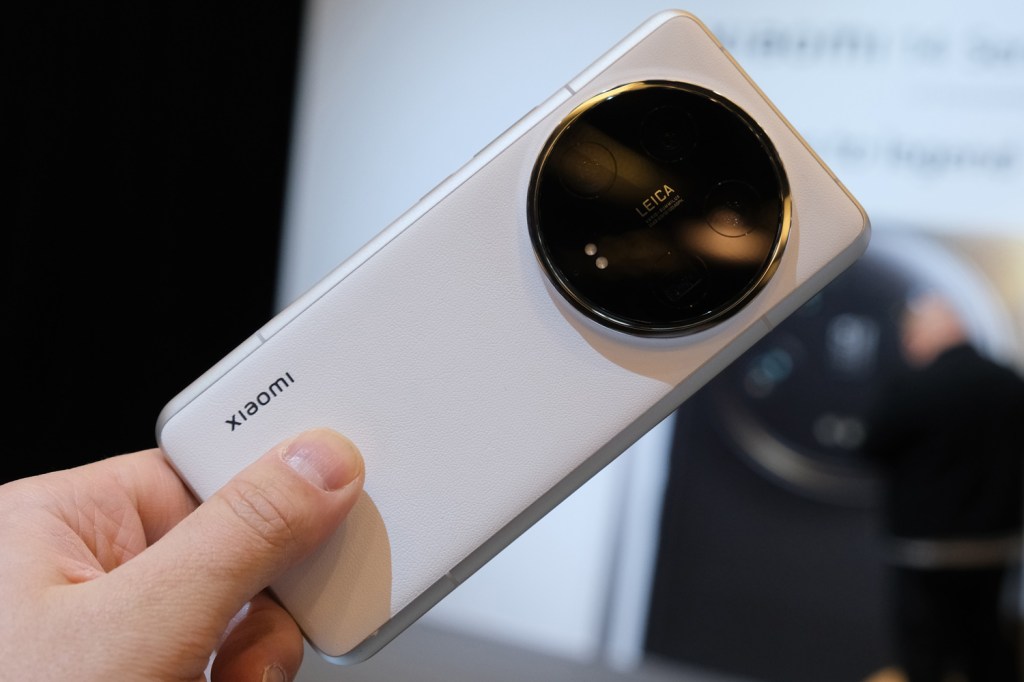Best AI phones: which smartphone has the best AI features?
From the Galaxy S24 Ultra to the Pixel 8 Pro, these are the best phones with AI abilities

Artificial intelligence, or AI, has become the phone world’s new favourite buzzword. There’s hardly a single upcoming smartphone that doesn’t have plans to incorporate machine learning and large language models in some form or another, and the first to do so are already on sale. But what are the best AI phones – and the features they bring actually worth having?
I’ve used a bunch of phones with AI on board, and a handful more that offload their AI processing to the cloud. The best AI smartphones have a mix of both. You’ll even find AI cameras and AI image editing on certain flagships. Some use cases are genuinely impressive, and will appeal to most phone owners; others are a lot more niche, and will only be useful to a small minority. These are the models that stand out so far.
The best AI smartphones on sale now
Samsung Galaxy S24 Ultra

Stuff Verdict
AI-powered transcriptions and summaries match the S24 Ultra’s productivity focus perfectly. It’s a powerhouse flagship in every other respect – with a price to match.
Pros
- Productivity-minded AI genuinely useful
- Flagship performance, display and build quality
- Very capable cameras
Cons
- AI functions only free for first year
- As expensive as flagship phones get
| Samsung Galaxy S24 Ultra tech specs | |
| Screen | 6.8in, 3200×1440 AMOLED w/ 1-120Hz LTPO adaptive refresh, 2600 nits |
| CPU | Qualcomm Snapdragon 8 Gen 3 For Galaxy |
| Memory | 12GB RAM |
| Storage | 256GB/512GB/1TB on-board |
| Cameras | 200MP, f/1.7 main w/ Quad pixel AF, OIS + 50MP, f/3.4 periscope zoom w/ dual pixel AF, OIS, 5x optical zoom + 10MP, f/2.4 zoom w/ dual pixel AF, OIS, 3x optical zoom + 12MP, f/2.2 ultrawide rear 12MP, f/2.2 front w. dual pixel AF |
| Battery | 5000mAh w/ 45W wired, 15W wireless charging |
| OS | Android 14 w/ OneUI 6.1 |
| Dimensions | 162x79x8.6mm, 232g |
The styling might not have changed much between generations, but Samsung has given the Galaxy S24 Ultra a comprehensive overhaul just about everywhere else. The frame has been given the titanium treatment, and curved glass is out in favour of a flat panel protected by Corning Gorilla Armour. Its abilities to reduce light reflections border on the magical.
A Snapdragon 8 Gen 3 For Galaxy CPU provides the performance muscle, with Samsung-specific tweaks that give it the edge over rival flagships. 12GB of RAM and a range of capacity options mean there’s a model out there for everyone. The S Pen stylus returns for note-taking and doodling, and the 5000mAh battery is easily big enough to last an entire day.
There’s still a quad camera setup at the rear, led by a 200MP main snapper that works wonders in just about all light conditions. A 12MP ultrawide and 10MP telephoto good for 3x optical zoom are unchanged from the outgoing S22 Ultra, but that phone’s 10x zoom lens has been traded for a 50MP periscope. It can do 5x optical zoom, and uses algorithms to get you even closer to the action.
Galaxy S24 Ultra AI features
Galaxy AI, Samsung’s suite of AI-enhanced software, debuted on the Galaxy S24 Ultra. Some of the stand-out features include a transcription summariser built into the voice recorder, which transcribes conversations on the fly (in multiple languages, to boot) and then creates a succinct synopsis in just a few taps.
Chat assist is baked into the onscreen keyboard, and suggests ways to tighten up your texts on the fly. It can create more professional-sounding phrases that might be good for work chats; emoji-filled messages that are down with the kids; sprinkle hashtags through your text for social media success; and even talk like Shakespeare.
Real-time voice translation, for both phone calls and in person, also relies on AI to give speedy and accurate interpretation. It supports 13 languages at launch, with more expected to follow later.
There’s also Circle to Search; this Google-led tool isn’t exclusive to Samsung phones any more, but it works brilliantly with the S24 Ultra’s S Pen. Press and hold the home button (or gesture bar, if you’re using gesture controls) and draw a circle around anything onscreen. Machine learning recognises objects and locations in a flash, bringing up relevant Google searches – including where to buy the items in question.
Samsung has also added AI to its image editor and photo gallery. It can remove unwanted reflections from glass and shadows from faces with a tap, delete or reposition objects anywhere in the frame, and generationally expand any images you’ve cropped too tightly. The AI camera elements are largely done post-shutter press, rather than before, but object detection does rely on machine learning.
Finally, Instant Slow-mo can create extra frames and inject them into your recorded video footage, creating a convincing effect even if your clips were only shot at 30fps. Just preview your video in the Samsung Gallery app, press and hold on the moment you want slowed down, and it’ll play back brilliantly smoothly.
Google Pixel 8 Pro

Stuff Verdict
Not the value champ that previous Pro-grade Pixels were, but it continues Google’s run of phenomenal phone photography, which is more AI-assisted than ever
Pros
- Sharper styling goes far in justifying premium price
- Some of the best cameras on any phone
- Android’s AI upgrades a sign of things to come
Cons
- Battery life and charging speeds still merely OK for a flagship
- Higher price makes rivals more tempting
| Google Pixel 8 Pro tech specs | |
| Screen | 6.7in, 2992×1344 OLED w/ 1-120Hz, HDR10+ |
| CPU | Google Tensor G3 |
| Memory | 12GB RAM |
| Storage | 128/256/512GB, 1TB (US only) on-board |
| Cameras | 50MP, f/1.7 w/ multi-directional PDAF, laser AF, OIS 48MP, f/2.8 telelphoto w/ 5x optical zoom, dual pixel PDAF, OIS 48MP, f/2.0 ultrawide w/ dual pixel PDAF 10.5MP, f/2.2 front w/ autofocus |
| Battery | 5050mAh |
| OS | Android 14 |
| Dimensions | 163x77x8.8mm, 213g |
Pixel phones used to be value champions, but the Pixel 8 Pro is a fully-fledged assault on the flagship space. It’s the best looking model to date, with frosted rear glass, a polished aluminium camera bar that blends seamlessly into the central frame, and a flat front display that’s bang on trend for 2024.
It’s powered by a home-grown Tensor G3 chipset, which includes dedicated Neural Processing Units (NPUs) for on-device AI. General and gaming performance is flagship-tier, if not quite up there with the best of the best. There’s a generous 5050mAh battery on board, along with goodies like wireless charging and a laser thermometer.
The Pixel’s biggest draw remains its camera setup, which includes a 50MP lead lens, 48MP ultrawide with macro focus, and a 48MP telephoto good for 5x optical zoom. Google’s image processing is impeccable, in all lighting conditions, and the addition of AI only makes it more versatile.
Google Pixel 8 Pro AI features
Google’s AI offering has gone through a couple of names, and just to confuse things further, has multiple versions. Originally known as Bard, it got renamed to Gemini in early 2024. In simple terms, Gemini Pro powers Gemini’s web-based chat interface; Gemini Ultra is more powerful, but not yet open to the public; and Gemini Nano is what’s baked into the Pixel 8 Pro.
Right now, its top features include a Summarise function in the voice recorder app. Open any recording, tap the Transcript button, then Summarise at the top; the phone will generate a bullet point synopsis, all on-device.
Smart reply in Gboard uses AI to suggest responses to your WhatsApp, Line, and KakaoTalk chats – but only in US English right now, and as a developer preview. It should start rolling out more widely later this year.
Circle to search is available to everyone, right now. Press and hold the gesture indicator (or onscreen home button if you have it enabled) and draw a circle around any onscreen text or image; your phone will then look it up on Google, using machine learning to recognise objects and locations with impressive speed and accuracy.
The Pixel 8 Pro can also create AI-generated wallpapers. It’s baked into Android 14, so will eventually be added to other manufacturers’ mobiles. You can pick from a bunch of themes, objects, materials and colours, with the phone creating a mix of convincing, surreal and clearly computer generated images.
Naturally for a Pixel phone, the Pixel 8 Pro’s AI focuses heavily on photography. Magic Editor intelligently recognises objects when you tap them, letting you move them around the image – or remove them entirely, with the phone filling in the gaps. The results can be genuinely impressive.
Best Take feels more like clever photo merging than true AI; it relies on you having taken multiple shots of the same scene. You can then tap on each person’s face and swap it out – handy for group shots where one person is blinking or looking away.
Finally, Video Boost sends your recorded video footage off to the Cloud for AI-based processing. It enhances colour and lighting to an impressive degree, but it’s Google’s servers doing all the heavy lifting here, rather than your phone.
Top AI smartphones coming soon
Xiaomi 14 Ultra

Xiaomi’s upcoming flagship promises to have some of the best photography hardware of any phone – and so it should, given the colossal camera bump at its rear. Leica glass, a 1in lead sensor with variable aperture lens, separate 3x and 5x zoom lenses each with optical image stabilisation, and a macro-capable ultrawide snapper should have phone fans salivating. Top-tier internals, including a Snapdragon 8 Gen 3 CPU and a huge 5000mAh battery, promise to keep pace everywhere else.
So far we’ve only seen demos of Xiaomi’s AI portrait feature, which should be arriving on the 14 Ultra as an over-the-air update. It can put take your face from a photo and put it into just about any pose, outfit or background you can think of (as long as it’s PG, of course). The results looked rather impressive, but we’ll withhold judgment for a full review.
